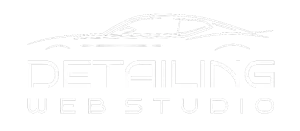Have you ever clicked on a detailing website, waited several seconds, and then left because it just wouldn’t load? If so, you’re not alone. I’m Sharif Siddique, founder of Detailing Web Studio, and I’ve seen firsthand how slow websites can cost auto detailers real money. A fast, smooth-loading website isn’t just nice to have — it’s essential for turning visitors into booked appointments.
In this article, I’m going to share practical, actionable website speed optimization tips specifically for auto detailers. These tips will help your auto detailing website design perform better, improve search rankings, and give your potential clients a frictionless experience. I’ll also include real-life examples from my experience helping detailers grow their business online.
Why Website Speed Matters for Auto Detailers
Think of your website as your digital shop front. If customers walk into a physical shop and the doors are stuck or the lights flicker, they’re likely to leave. The same principle applies online. Research shows that even a one-second delay in website load time can reduce conversions by up to seven percent. For auto detailers, that could be dozens of missed bookings each month.
Website speed affects:
- User Experience: Slow-loading pages frustrate visitors and increase bounce rates.
- Local SEO: Google favors faster websites in search rankings.
- Conversions: Booking forms, galleries, and pricing pages must load quickly for clients to trust your business.
One of my clients in Florida had a gorgeous website with beautiful galleries and service pages. But the site took over six seconds to load on mobile. After optimizing images, caching, and scripts, the load time dropped to under two seconds, and their bookings increased by 35 percent within a month.
Key Factors That Affect Website Speed
Before jumping into solutions, it’s important to understand what slows down a website. Common culprits for auto detailing websites include:
- Large image galleries of car detailing work
- Unoptimized video content
- Too many plugins or poorly coded themes
- External scripts, like chatbots or social media feeds
- Slow hosting servers
By addressing these issues, you can dramatically improve your website speed and overall performance.
Step 1: Optimize Images
Detailing websites often rely on high-quality images to showcase before-and-after transformations. But large image files can drastically slow down your site.
Tips for Image Optimization:
- Compress images without losing quality using plugins like Smush or ShortPixel
- Use the correct format: JPEG for photos, PNG for graphics, WebP for web-friendly high-quality images
- Resize images to the display size needed on your website
- Use lazy loading so images load as users scroll
Mini-Story:
A client in California uploaded full-resolution images straight from his camera. His homepage took seven seconds to load. After resizing and compressing the images, load time dropped to 2.5 seconds and mobile users stayed longer, resulting in more bookings.
Step 2: Use a Reliable Hosting Provider
Your website’s server plays a huge role in speed. Cheap, shared hosting can slow down your site, especially if multiple websites share the same server resources.
Tips for Choosing Hosting:
- Look for providers specializing in WordPress or small business websites
- Ensure they offer SSD storage and a content delivery network (CDN)
- Check uptime guarantees and customer support responsiveness
I always recommend managed WordPress hosting for auto detailers. Sites we host at Detailing Web Studio on optimized servers consistently load under two seconds.
Step 3: Implement Caching
Caching creates a static version of your website and serves it to visitors, reducing the load on your server and speeding up page delivery.
Recommended Caching Plugins:
- WP Rocket: Comprehensive caching with lazy loading and file optimization
- W3 Total Cache: Free option with advanced settings for more control
- Autoptimize: Minifies CSS, JS, and HTML to improve load times
Step 4: Minimize and Combine Scripts
Too many JavaScript and CSS files can slow down a site. Combining and minifying them reduces the number of requests to the server.
- Use plugins like Autoptimize or WP Rocket
- Only include scripts that are necessary for your website’s functionality
- Defer non-critical scripts so they load after the main content
Step 5: Leverage a Content Delivery Network (CDN)
A CDN stores copies of your website on servers around the world. When someone visits your site, it loads from the server closest to them, reducing latency.
Popular CDN Options:
- Cloudflare: Free and premium options, easy integration with WordPress
- BunnyCDN: Affordable and fast with global coverage
Step 6: Keep Plugins and Themes Lightweight
Too many plugins or a bloated theme can drag your website down.
Tips:
- Only use necessary plugins
- Remove unused plugins and themes
- Choose lightweight, well-coded themes optimized for speed, like Astra or GeneratePress
One of my clients installed ten unnecessary plugins. His site was sluggish. After trimming down to essential plugins, his load times dropped by 40 percent.
Step 7: Enable Gzip Compression
Gzip compresses website files before sending them to a visitor’s browser, reducing load times. Many hosting providers offer this automatically, or you can enable it via caching plugins.
Step 8: Optimize Mobile Performance
Over 60 percent of auto detailing clients browse websites on mobile devices. A slow mobile site can kill your conversion rate.
Tips:
- Use responsive themes
- Optimize images for mobile
- Test mobile speed using Google PageSpeed Insights and make adjustments
Step 9: Reduce External Requests
External scripts like embedded videos, chatbots, and social feeds can slow down your website. Only include what’s essential and use asynchronous loading when possible.
Step 10: Regularly Monitor and Test Speed
Optimizing your website isn’t a one-time task. Regular monitoring ensures your site stays fast as you add new content.
Tools to Monitor Website Speed:
- Google PageSpeed Insights
- GTMetrix
- Pingdom
Pro Tips and Insider Hacks
- Always optimize images before uploading to the website
- Combine speed, SEO, and booking plugins carefully to avoid conflicts
- Use a lightweight theme and limit page builder elements
- Implement schema markup for services, reviews, and local business data
- Schedule monthly speed audits to maintain performance
Common Mistakes to Avoid
- Ignoring mobile optimization
- Installing too many plugins
- Using large, uncompressed images
- Neglecting hosting performance
- Failing to test website speed after updates
Mini-Story:
A mobile detailing business in Texas had a beautiful WordPress website, but the homepage loaded in six seconds. After compressing images, enabling caching, and moving to a better host, the load time dropped to 1.8 seconds. Google rankings improved, and more customers booked online within the first week.
Key Takeaways
Optimizing website speed for auto detailers is essential for improving user experience, increasing bookings, and boosting SEO. Focus on image optimization, reliable hosting, caching, minimizing scripts, CDNs, mobile performance, and regular monitoring. Combining these strategies ensures your auto detailing website design performs at its best.
FAQ Section
How fast should an auto detailing website load
Under three seconds on desktop and mobile for best user experience and SEO
Do speed plugins affect SEO
Yes, faster websites rank better on Google and improve user engagement
Can I optimize images without plugins
Yes, but plugins automate compression and lazy loading, saving time
Is mobile optimization really that important
Absolutely, most clients browse and book services on mobile devices
How often should I test website speed
At least once a month or after major updates
Conclusion
Website speed is more than just a technical detail — it’s a key factor in growing your auto detailing business online. A fast website improves SEO, builds trust, and converts visitors into paying clients. At Detailing Web Studio, we focus on building auto detailing websites that are fast, reliable, and optimized for bookings.
Book a free website audit today, and I’ll help you identify speed issues, optimize your site, and increase your online leads.

